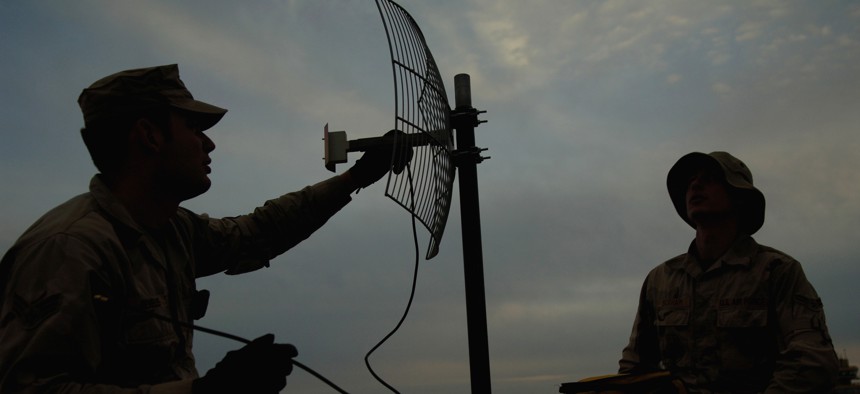sponsor content What's this?

Program Offices are Key to Integration Responsibilities for Resilient Positioning, Navigation and Timing
Robust positioning, navigation and timing (PNT) capabilities have created huge strategic advantages, but also troublesome dependencies.
Presented by
Booz Allen Hamilton

Robust positioning, navigation and timing (PNT) capabilities have become defining ingredients of a modern military strategy since the dawn of the Global Positioning System (GPS) two decades ago. These abilities have created huge strategic advantages, but also troublesome dependencies. GPS-enabled systems are ubiquitous across the U.S. military enterprise; today, more than 700 military platforms rely on GPS signals for PNT capabilities.
As the myriad of threats facing government and military organizations evolve, many leaders are looking to modernize their PNT tools and strategies and adapt a new way of thinking that transcends individual systems. Typically, complex integration work, including designing and building these systems, is entrusted to Original Equipment Manufacturers (OEMs) rather than program managers.
Most GPS-enabled systems in use today were developed for very specific government environments by their OEMs, and are not easily upgraded or incorporated into other systems. This disparate nature makes them inefficient and expensive to maintain. As the landscape changes, PNT capabilities need to be as agile, adaptable and resilient as ever, with the ability to integrate into and work across multiple platforms. Additionally, PNT-dependent systems need to be able to adapt and respond to evolving threats.
At the same time, affordability and cost-containment are ever-important. In order to make informed budget decisions about PNT programs, managers need to know exactly what they cost to purchase, operate and maintain. The only way to do this is for the program manager to take over the system integrator role.
Government and military organizations need to have all pertinent information available during the acquisition, implementation and management processes in order to make the best possible decisions. Because of this, proper systems integration will be critical to delivering effective, resilient and affordable PNT-dependent systems. Program managers, who already have a highly-specialized set of technical skills as well as a solid understanding of PNT missions, are most likely to succeed in this effort.
Read the thought piece to learn more about this topic.
Related Insights
Video: Resilient Positioning, Navigation, and Timing (PNT) requires new thinking about systems integration
Video: Open systems architecture for Positioning, Navigation, and Timing (PNT) modernization
Video: Integrating Positioning, Navigation, and Timing (PNT) systems
Report: Prospective Space Warfare: Top 5 Takeaways from the Defense One Summit
Video: Engineering: Securing a Positioning, Navigation, and Timing (PNT) strategy for the future
NEXT STORY: Realizing the Full Power of Data